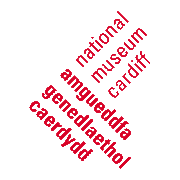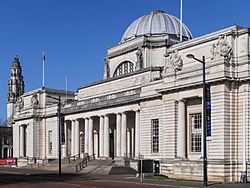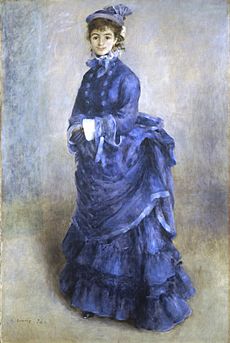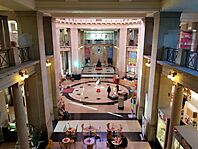National Museum Cardiff facts for kids
| Amgueddfa Genedlaethol Caerdydd | |
 |
|

Façade of the National Museum Cardiff
|
|
| Lua error in Module:Location_map at line 420: attempt to index field 'wikibase' (a nil value). | |
| Established | 1912 |
|---|---|
| Location | Cathays Park, Cardiff CF10 3NP, Wales |
| Visitors | 472,544 (2015) |
| Public transit access | Cathays Cardiff Bus 27 |
The National Museum Cardiff (in Welsh, Amgueddfa Genedlaethol Caerdydd) is a large museum and art gallery in Cardiff, Wales. It is part of a bigger group called Amgueddfa Cymru – Museum Wales. You can visit for free because the Welsh Government helps pay for it.
Contents
History of the Museum
The National Museum of Wales started in 1905. It got its special permission, called a royal charter, in 1907. To help Cardiff get the museum, the city gave its own museum collection. This collection was known as the "Welsh Museum of Natural History, Archaeology and Art." It was officially given to the new museum in 1912.
Before this, the Cardiff Museum shared a building with the Cardiff Library. It was part of the library until 1893. Building a new home for the museum began in 1912. This new building was in a special area of Cardiff called Cathays Park.
The First World War caused delays. So, the museum did not open to the public until 1922. The official opening happened in 1927. The main designers were Arnold Dunbar Smith and Cecil Brewer. The building you see today is a smaller version of their original plan.
Many sculptures decorate the building. Sir W. Goscombe John planned these artworks. They include groups like Prehistoric Period and Classic Period by Gilbert Bayes. Other sculptures show things like Learning, Mining, and Shipping.
What You Can See Today
The museum has many different collections. These include:
- Botany: All about plants.
- Fine and Applied Art: Beautiful paintings, sculptures, and decorative items.
- Geology: Rocks, minerals, and the history of the Earth.
- Zoology: Animals from all over the world.
The Archaeology collection, which is about ancient history, has moved to the St Fagans National Museum of History.
In 2011, a new area opened called the Clore Discovery Centre. This was made possible with money from the Clore Duffield Foundation. Here, you can explore many items that are usually kept in storage. The museum has about 7.5 million items! These include insects, fossils, and old Bronze Age weapons. School groups and other visitors can also come, but it's best to book ahead.
National Museum of Art
The National Museum of Art opened in 2011. It has many important paintings from different times.
The collection includes works by famous old artists, called Old Masters. For example, you can see The Virgin and Child between Saint Helena and St Francis by Amico Aspertini. There is also The Poulterer's Shop by Frans Snyders. Since 2016, the museum has shown Rembrandt's 1657 painting Portrait of Catharina Hooghsaet.
In 2019, a painting of the Madonna and Child with a Pomegranate was studied. People thought it was a copy of a lost work by Sandro Botticelli. After careful cleaning and research, experts confirmed it was from Botticelli's own studio. Parts of it were even painted by the master himself!
The museum also has many landscape paintings. These include works by Claude, Gaspard Dughet, and Salvator Rosa. There are two paintings by Nicolas Poussin: The Funeral of Phocion and The Finding of Moses. These works helped inspire Richard Wilson, who is known as "the father of British landscape painting."
One gallery focuses on British art from the 1700s. It shows art collected by people like Sir Watkin Williams Wynn. You can see his portrait painted in Rome by Pompeo Batoni.

The museum also has a wonderful collection of French art. This was given by two sisters, Margaret and Gwendoline Davies. They were the granddaughters of a rich industrialist, David Davies. Their gifts made the museum's art collection famous around the world.
This collection has the most paintings by Honoré Daumier anywhere. It also has important works by Jean-François Millet. You can see paintings by Claude Monet, including scenes of Venice and his famous Rouen Cathedral and Water Lilies series.
Later French art, called Post-impressionism, is also here. You can see Van Gogh's Rain at Auvers. There is also Paul Cézanne's The François Zola Dam. This was the first painting by Cézanne to be shown in a British public museum.
Two of the most famous works from the Davies Sisters' collection are:
- La Parisienne by Pierre-Auguste Renoir (1874). This painting was shown at the very first Impressionist art show.
- A bronze version of Rodin's sculpture Kiss.
The art gallery also displays works by important Welsh artists. These include landscapes by Richard Wilson and Thomas Jones. There are sculptures by John Gibson, who was Queen Victoria's favorite sculptor. You can also see major paintings by Augustus John and his sister Gwen John.
The museum also has 20th-century art. This includes works by sculptors like Jacob Epstein and Eric Gill. Painters include Stanley Spencer and L. S. Lowry. Works by modern artists are also shown. These include pieces by Francis Bacon and Rachel Whiteread. In 2009, the museum bought Nature morte au poron by Pablo Picasso.
Looking at History: Black Lives Matter
In 2020, people started talking more about statues and monuments. There was a discussion about removing monuments to Sir Thomas Picton in Carmarthen and Cardiff. Sir Thomas Picton was a Welsh war hero who died in battle. However, he also had a difficult past as a governor in Trinidad. During his time there, he was known for treating people very harshly.
In November 2021, the museum decided to remove a 19th-century portrait of Sir Thomas Picton. They replaced it with a painting of a Welsh gardener. The museum also asked artists to create new works. These new artworks help people think about Sir Thomas Picton's full story and his impact.
See also
 In Spanish: Museo Nacional de Cardiff para niños
In Spanish: Museo Nacional de Cardiff para niños



